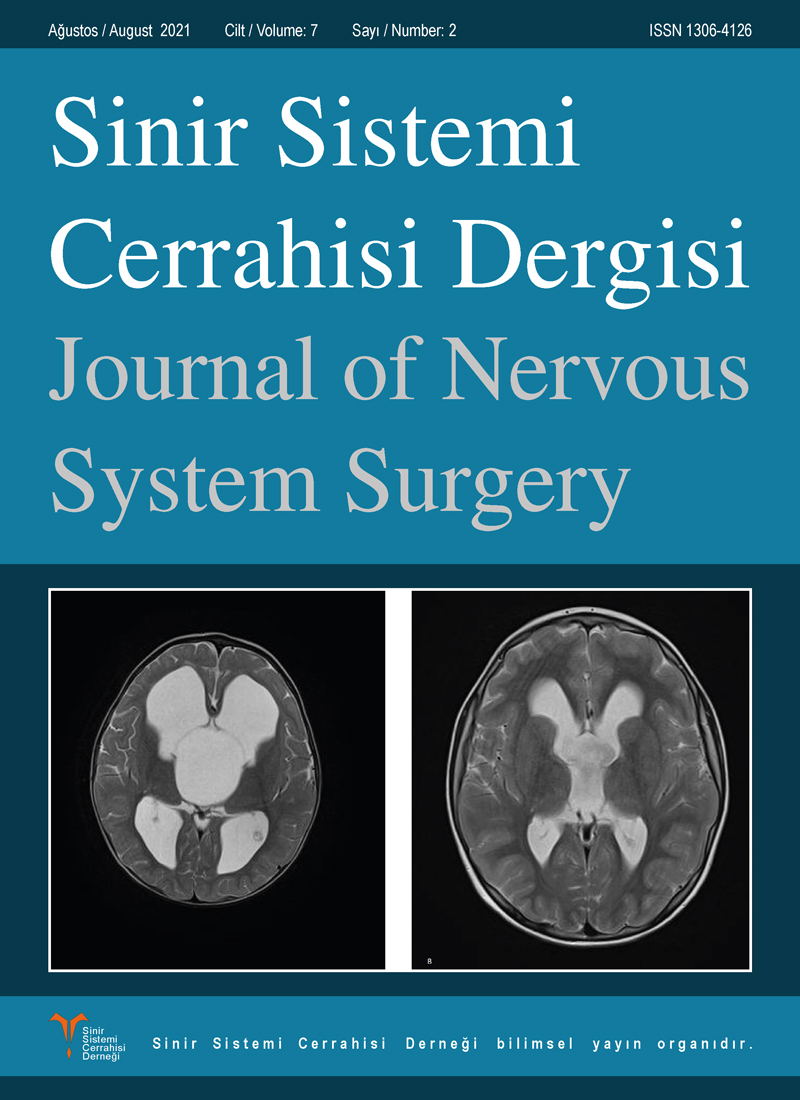Öz
Amaç: Vertebroplasti ilk kez 1984 yılında vertebra hemanjiomu olan bir hastada uygulanmıştır. Ortalama yaşam süresinin artması osteoporoz olgu sayısındaki artışa paralel olarak vertebral çökme kırıklarının görülme sıklığını da artmıştır. Pediküllerden vertebra gövdesine polimetilmetakrilat (PMMA) enjeksiyonunu içeren minimal invaziv bir tekniktir. Bu çalışmada perkütan vertebroplasti (PVP) uygulanan vertebra kompresyon kırığı (VKK) olan postmenopozal osteoporozlu (PMO) hastalarda eşlik eden hastalıklar ve bu hastalıkların sıklıkları değerlendirildi.
Gereç ve Yöntem: Nöroşirürji kliniğimizde Mayıs 2015-Mayıs 2019 tarihleri arasında PVP uygulanan VKK olan PMO’lu 69 kadın hasta retrospektif olarak gözden geçirildi. Hastaların demografik verileri ile birlikte eşlik eden sistemik hastalıkları hasta dosyalarından kaydedildi.
Bulgular: Çalışmamıza dahil edilen hastaların yaş ortalamaları 73,30 ± 9.09 (49-92 yıl) yıldı. Hipertansiyon, eşlik eden sistemik hastalıklar arasında %39,1’lik oranıyla ilk sırada yer aldı. Sonra azalan sırayla osteoartrit (OA), tip II diyabetes mellitus (DM), gastrointesitinal sistem hastalıkları, kardiyak hastalıklar, serebrovasküler hastalıklar, Alzheimer hastalığı, kronik obstruktif akciğer hastalığı (KOAH), geçirilmiş spinal cerrahi, tiroid hastalıkları, anemi, kronik böbrek yetmezliği (KBY), epilepsi, sigara, glokom, malignite ve depresyon saptandı. Özgeçmişinde özellik olmayan hasta sayısı ise %13’tü.
Sonuç: Ülkemizde ve tüm dünyada özellikle yaşlı popülasyonda sık görülen PMO’un sistemik hastalıklar ve bazı cerrahi müdahalelerle şiddeti artabilir veya tedavisi bozulabilir. Osteoporozdan ve eşlik eden sistemik hastalıklardan korunmak cerrahi girişim uygulamaktan daha önemlidir.
Anahtar Kelimeler: Postmenopozal, vertebroplasti, osteoporoz
Telif hakkı ve lisans
Telif hakkı © 2021 Yazar(lar). Açık erişimli bu makale, orijinal çalışmaya uygun şekilde atıfta bulunulması koşuluyla, herhangi bir ortamda veya formatta sınırsız kullanım, dağıtım ve çoğaltmaya izin veren Creative Commons Attribution License (CC BY) altında dağıtılmıştır.






